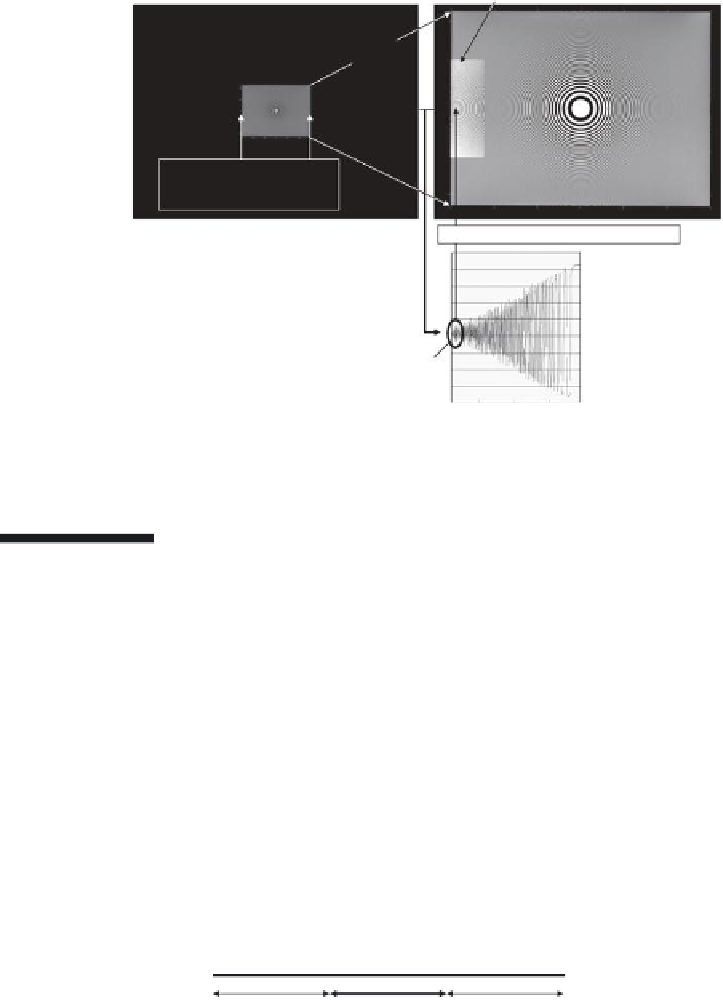Image Processing Reference
In-Depth Information
Especially emphasized
image
Emphasized
image
Expanded
Corresponding
to 2350 TV lines
(a)
600
400
200
0
200
400
600
Nyquist frequency (2328 TV lines)
(Without OLFP)
False signal
(b)
FIGURE 6.9
(a,b) CZP picture taken at 1.8 μm with a 3096(H) × 2328(V) pixel CCD without OLPF.
6.3 Sampling in Time Domain
In this section, sampling in the time domain is described. Since information concerning
time is only image blurring in the case of still images, only cases of moving pictures are
considered here. As already mentioned in Chapter 1, still images are repeatedly taken at
a constant time interval in capturing moving images. As described in Chapter 4 on elec-
tronic shutters, images are picked up during some part of the interval time, that is, the
exposure period.
This event is shown in Figure 6.10 as a schematic diagram along a time axis by the rep-
etition of a frame time involving the exposure period. This sampling structure is exactly
the same as that of the space sampling in Figure 6.4. Therefore, a shorter sampling pitch
means a higher frame rate that can take higher-frequency information, that is, more accu-
rate high-speed images can be obtained. A shorter exposure period means a narrower
sampling width providing less blurred images of moving objects, that is, a higher MTF or
Time
No exposure period
No information
t
ex
: Exposure period
(time aperture)
t
f
: Frame time
= sampling pitch
(sampling frequency:
f
s
= 1/
t
ex
)
FIGURE 6.10
Schematic diagram of sampling in time domain, frame time pitch, and exposure period.



















